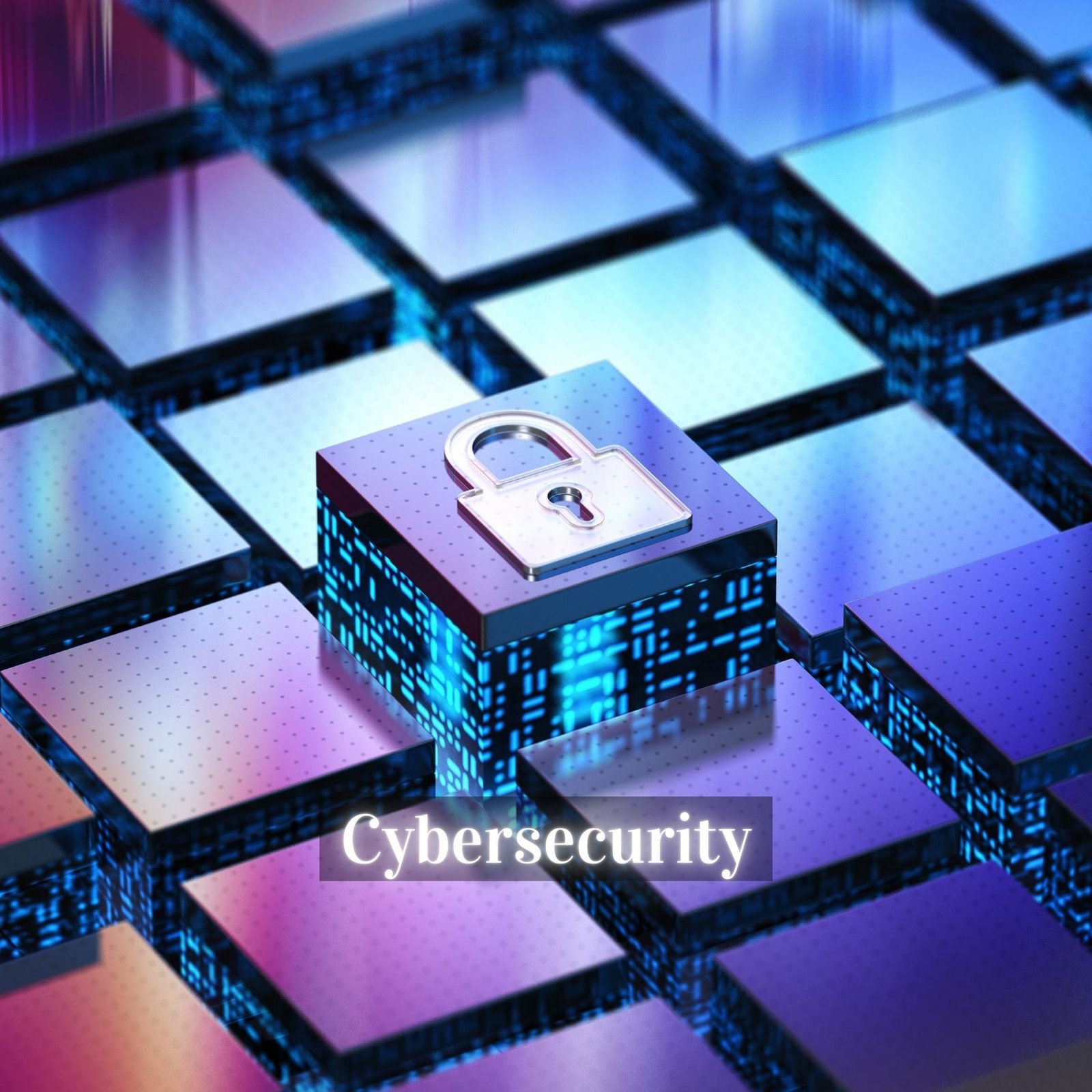Table of Contents
Introduction
Cyber threats are becoming increasingly advanced every day, which means that both personnel and companies are always at risk. Be it phishing emails masquerading as real messages or ransomware shutting out critical data, cybercriminals are never short of ways to exploit vulnerabilities. Poor cybersecurity could mean severe ramifications: financial losses and grave reputational damage.
In this article, the most common cybersecurity challenges are addressed, and practical ways to protect the digital world are broached. Let’s explore the inherent risks and ways one can safeguard oneself.
1. Understanding the Modern Cyber Threat Landscape
The digital world is fraught with dangers, thus making cybercriminals on the prowl for their next victim. The first step towards cybersecurity is understanding the dangers.
Rise of Cybercrime
Cybercrime has become a multi-billion-dollar industry as hackers are using advanced techniques to steal data, extort money, and disrupt operations. As dependence on digital systems increases, businesses and individuals are more exposed than ever.
Common Cyber Threats
Below are some of the more common types of cyber threats:
- Malware, or malicious software that can damage systems or gain unauthorized access to them.
- Phishing, or any scam designed to obtain sensitive informations by mimicking trustworthy objects.
- Ransomware, in which the attacker will encrypt files and extort a fee for providing a decrypt key.
- DDoS attacks vs. the encroachment of traffic overwhelming the system itself.
- Zero-day exploits, which aim to exploit software with unpatched vulnerabilities before developers release fixes.
Some High-Profile Cyber Attacks.
- WannaCry Ransomware (2017): A global ransomware attack that infected over 200,000 computers across 150 countries.
- Yahoo Data Breach (2013-2014): Hacked information belonging to over 3 billion users.
- SolarWinds Attack (2020): An advanced supply chain attack that even entered into government agencies as well as private companies.
Such attacks raise an alarm for the need for specific fortified measures with respect to cybersecurity in order to mitigate such threats and subsequent damages.
2. Weak Passwords and Authentication Issues
One of the easiest ways out the cybercriminals gain access to the systems is through the use of weak passwords. A weak password is looked at as leaving a front door open for any intruder.
Why Weak Passwords Are a Security Risk
- Most users choose easily guessed passwords such as “123456” or use “password” as their password.
- People reuse multiple passwords across different sites, adding to the increasing risk of breach.
- Weak passwords are easily susceptible to brute-force attacks by cybercriminals.
Importance of Multi-Factor Authentication (MFA)
MFA is a second layer of security after a password. Even if the hacker gets hold of your password, they would need a second factor (like a fingerprint or a one-time code) in order to access the account.
Helpful Guidelines on Making Strong Passwords
- The person should have a password with a total of at least 12 to 16 characters using numbers, symbols, and uppercase and lowercase letters.
- The person should avoid using common words and personal information in a password.
- Each user should have different passwords for each of their accounts.
Password Management
Using a password manager, such as LastPass, 1Password, or Bitwarden aids in secure password storage and generation.
3. Phishing and Social Engineering Attacks
Understanding how to impersonate legitimate companies and deceive users is the crux of phishing and social engineering attacks, where the psychological aspect of the human mind is manipulated more than technical vulnerabilities.
What is Phishing?
Phishing is when an attacker, pretending to be an actual entity, tries to steal personal data such as usernames and passwords or even financial information from the targeted user.
How Hackers Use Social Engineering
- Impersonation: Pretending to be a trusted contact (e.g., a bank representative or IT support).
- Urgency Tactics: Creating a sense of urgency to pressure users into clicking malicious links.
- Spear Phishing: A targeted attack customized for a specific individual or organization.
Identifying Phishing Attempts
- Check email senders for misspellings or unfamiliar addresses.
- Hover over links before clicking to verify their legitimacy.
- Be wary of urgent requests for sensitive information.
Ways to Protect Against Phishing Scams
- Enable email spam filters.
- Avoid clicking on links or downloading attachments from unknown sources.
- Use security tools like anti-phishing browser extensions.
4. Ransomware: The Growing Threat
Ransomware attacks are becoming increasingly sophisticated, with criminals demanding payments in cryptocurrency to unlock encrypted files.
How Ransomware Attacks Occur
- Phishing emails with malicious attachments.
- Exploiting unpatched software vulnerabilities.
- Malicious downloads from untrusted websites.
Real-Life Ransomware Incidents
- Colonial Pipeline Attack (2021): A ransomware attack that led to fuel shortages across the U.S.
- JBS Foods Attack (2021): A global meat supplier paid an $11 million ransom to restore operations.
Steps to Prevent and Recover from Ransomware
- Regularly back up critical data.
- Keep software and security patches up to date.
- Avoid clicking on suspicious email links or attachments.
5. Insider Threats and Human Error
While external threats like hackers and malware get a lot of attention, insider threats—employees, contractors, or even partners with access to systems—can be just as dangerous.
How Employees Unknowingly Compromise Security
Many security breaches are caused by simple mistakes or lack of awareness. Some common ways employees expose businesses to cyber risks include:
- Clicking on malicious links in emails
- Using weak or reused passwords
- Sending sensitive information to the wrong recipient
- Falling for social engineering scams
Types of Insider Threats
- Accidental Insiders: Employees who unintentionally compromise security, such as misconfiguring systems or falling for phishing scams.
- Malicious Insiders: Employees who purposely steal data, sabotage systems, or sell access to cybercriminals.
- Negligent Insiders: Workers who ignore security policies, such as leaving company devices unattended or using unauthorized apps.
Training and Awareness Programs
- Conduct regular cybersecurity training sessions.
- Use simulated phishing attacks to test employee awareness.
- Create a culture where employees feel comfortable reporting security concerns.
Policies to Mitigate Human Error Risks
- Enforce least privilege access (only granting employees access to what they need).
- Implement strict device security policies (requiring encrypted devices, strong passwords, and regular updates).
- Use behavioural monitoring tools to detect unusual activity within the network.
6. Unsecured Networks and Public Wi-Fi Risks
Public Wi-Fi may be convenient, but it’s a hacker’s playground. Cybercriminals can easily intercept data transmitted over unsecured networks, putting your sensitive information at risk.
Dangers of Using Public Wi-Fi
- Man-in-the-middle (MITM) attacks: Hackers intercept communication between your device and the network.
- Fake Wi-Fi networks: Attackers set up rogue hotspots that mimic legitimate ones to steal login credentials.
- Session hijacking: Hackers steal cookies to gain access to user accounts.
How Cybercriminals Exploit Unsecured Networks
- Using packet sniffers to capture unencrypted data.
- Injecting malware into unprotected devices.
- Deploying evil twin attacks, where a fake Wi-Fi hotspot tricks users into connecting.
Safe Practices When Using Public Wi-Fi
- Avoid accessing sensitive accounts (like online banking) over public networks.
- Always use HTTPS websites (look for the padlock icon in the URL).
- Keep Wi-Fi and Bluetooth turned off when not in use.
VPNs and Other Security Solutions
A Virtual Private Network (VPN) encrypts your internet connection, making it nearly impossible for hackers to intercept your data. Popular VPNs include:
- NordVPN
- ExpressVPN
- CyberGhost
Using a VPN is one of the best ways to stay safe when connecting to public networks.
7. Software Vulnerabilities and Unpatched Systems
Hackers are constantly searching for security holes in outdated software. When companies fail to update their systems, they leave the door open for cyberattacks.
The Importance of Regular Updates
Software updates often include patches for known vulnerabilities. Without them, hackers can exploit weaknesses in your system to gain access to sensitive data.
How Hackers Exploit Outdated Software
- Zero-day attacks: Cybercriminals take advantage of unknown software flaws before developers release patches.
- Exploit kits: Malicious tools scan for unpatched systems and deploy malware.
- Remote code execution: Hackers can run unauthorized code on outdated software, taking full control of a system.
Best Practices for Patch Management
- Enable automatic updates for operating systems and software.
- Regularly update antivirus and security tools.
- Apply security patches as soon as they’re available.
- Conduct vulnerability assessments to identify and fix weak spots.
Tools for Automating Updates
Using patch management tools like Microsoft WSUS, Automox, or SolarWinds Patch Manager ensures your systems stay up to date without manual intervention.
8. Cloud Security Concerns
With businesses rapidly shifting to cloud services, securing cloud environments has become a major challenge. Misconfigurations, weak authentication, and data breaches are just some of the risks.
Risks Associated with Cloud Storage
- Data breaches: Poor access controls can expose sensitive information.
- Misconfigurations: Incorrect security settings leave cloud resources vulnerable.
- Insider threats: Employees with unnecessary access can leak or misuse data.
Misconfigurations and Data Breaches
Many cloud breaches occur due to simple mistakes, such as:
- Leaving storage buckets open to the public.
- Using default login credentials.
- Failing to configure proper access controls.
How to Secure Cloud Environments
- Use strong access controls and implement the principle of least privilege.
- Enable encryption for data at rest and in transit.
- Regularly audit and monitor cloud activity for suspicious behaviour.
Encryption and Access Control Best Practices
- Encrypt sensitive files before uploading them to the cloud.
- Implement multi-factor authentication (MFA) for cloud accounts.
- Use Cloud Security Posture Management (CSPM) tools like Prisma Cloud or Microsoft Defender for Cloud.
9. IoT Security Risks
The Internet of Things (IoT) is revolutionizing daily life, but these connected devices also introduce new security risks.
Why IoT Devices Are Vulnerable
- Many IoT devices have weak default passwords.
- Manufacturers often fail to provide security updates.
- IoT devices frequently lack built-in security features.
Common IoT Security Threats
- Botnet attacks: Hackers take control of IoT devices to launch large-scale cyberattacks.
- Eavesdropping: Attackers intercept unencrypted IoT data.
- Unauthorized access: Hackers gain control of smart home devices, cameras, and more.
Best Practices for Securing IoT Devices
- Change default passwords immediately.
- Keep firmware updated.
- Disable unnecessary features like remote access if not needed.
- Use a separate network for IoT devices to prevent them from compromising other systems.
Future Trends in IoT Security
- AI-driven threat detection to identify suspicious IoT behaviour.
- More secure IoT standards from manufacturers.
- Greater use of blockchain to secure IoT transactions.
10. Data Privacy and Compliance Challenges
Data privacy is a growing concern, with laws like GDPR (General Data Protection Regulation) and CCPA (California Consumer Privacy Act) setting strict regulations on how businesses handle user data.
Importance of Data Protection Laws
Governments worldwide are enforcing data protection laws to:
- Protect consumer privacy.
- Prevent unauthorized data sharing.
- Hold companies accountable for breaches.
How Businesses Struggle with Compliance
- Difficulty in tracking and securing personal data.
- Lack of employee training on data privacy laws.
- Poor encryption and access control practices.
Steps to Improve Data Privacy
- Conduct regular data audits to identify and secure sensitive information.
- Train employees on data protection best practices.
- Encrypt customer and business data to prevent unauthorized access.
Role of Encryption in Protecting Data
Encryption ensures that even if data is stolen, it remains unreadable without the proper decryption keys.
Common encryption tools:
- AES (Advanced Encryption Standard) is used to secure sensitive data.
- PGP (Pretty Good Privacy) is used to encrypt emails and files.
- TLS (Transport Layer Security) is used to secure web traffic.
11. Mobile Device Security Risks
With the rise of smartphones and remote work, mobile device security has become a critical concern. Hackers often target mobile users through malware, phishing, and unsecured networks.
How Mobile Devices Are Targeted
- Malicious apps disguised as legitimate software.
- Phishing attacks via SMS (smishing) and email.
- Unsecured Wi-Fi connections expose data.
- Device theft leads to unauthorized access to sensitive information.
Common Mobile Security Threats
- Malware: Harmful software that steals data or damages the device.
- Rogue Apps: Apps that secretly collect personal information.
- Man-in-the-Middle Attacks: Interception of communication on unsecured networks.
- SIM Swapping: Criminals hijack phone numbers to bypass security measures.
Secure Practices for Mobile Users
- Download apps only from official stores (Google Play, Apple App Store).
- Keep the operating system and apps updated.
- Enable device encryption to protect stored data.
- Avoid using public Wi-Fi without a VPN.
Recommended Security Apps and Settings
- Antivirus software: Bitdefender, Avast, McAfee
- VPN apps: NordVPN, ExpressVPN
- Two-factor authentication (2FA) apps: Google Authenticator, Authy
- Find My Device tools: Apple’s Find My iPhone, Google’s Find My Device
By following these best practices, users can significantly reduce the risks associated with mobile devices.
12. Emerging Cybersecurity Technologies
As cyber threats evolve, so do security technologies. Several innovations are reshaping the way we protect digital systems.
AI and Machine Learning in Cybersecurity
Artificial intelligence (AI) plays a major role in detecting and preventing cyber threats.
- Threat detection: AI analyzes behaviour patterns to identify suspicious activities.
- Automated response: AI-powered security systems can instantly block cyberattacks.
- Predictive analytics: Machine learning helps forecast potential threats before they occur.
Zero Trust Security Model
The Zero Trust model assumes that no one—inside or outside the organization—can be trusted by default.
- Least privilege access: Employees only get access to what they need.
- Continuous verification: Users and devices are constantly monitored.
- Micro-segmentation: Networks are divided into secure zones to limit unauthorized access.
Blockchain for Secure Transactions
Blockchain enhances security through the following:
- Decentralization: Eliminates single points of failure.
- Encryption: Ensures secure and tamper-proof transactions.
- Smart contracts: Automates and secures digital agreements.
Future of Cybersecurity Innovations
- Quantum cryptography for ultra-secure encryption.
- Biometric authentication replacing passwords.
- Cybersecurity automation to handle threats in real time.
By adopting these emerging technologies, businesses and individuals can stay ahead of cybercriminals.
13. Best Practices for Individuals and Businesses
Whether you’re an individual or a business, cybersecurity should be a top priority. Here are some essential best practices to enhance digital security.
Steps to Improve Personal Cybersecurity
- Use strong, unique passwords for every account.
- Enable multi-factor authentication (MFA).
- Regularly update software and operating systems.
- Be cautious when clicking on links or downloading attachments.
Cybersecurity Framework for Businesses
Organizations should follow a structured approach to cybersecurity:
- Identify: Assess risks and vulnerabilities.
- Protect: Implement security measures (firewalls, encryption, access controls).
- Detect: Monitor for suspicious activity.
- Respond: Develop an incident response plan.
- Recover: Restore operations and prevent future attacks.
Cyber Hygiene Habits for Daily Protection
- Regularly back up important data.
- Use antivirus and endpoint security software.
- Avoid public Wi-Fi without a VPN.
- Stay informed about current cybersecurity threats.
Role of Cybersecurity Training
- Conduct regular security awareness sessions.
- Simulate phishing attacks to test employee awareness.
- Implement clear policies on data protection and device usage.
A proactive approach to cybersecurity can prevent costly breaches and data loss.
14. How to Respond to a Cyber Attack
Despite best efforts, cyber incidents can still occur. Knowing how to respond quickly can minimize damage.
Immediate Steps After a Breach
- Isolate affected systems to prevent the attack from spreading.
- Change all compromised passwords immediately.
- Identify the attack source (phishing, malware, network breach).
Incident Response Planning
- Establish a cyber incident response team.
- Develop detailed action plans for different types of attacks.
- Regularly test response strategies through simulations.
Recovery Strategies and Legal Considerations
- Restore from backups if data was encrypted or lost.
- Notify affected individuals and customers as required by law.
- Work with cybersecurity experts to investigate the breach.
When to Involve Cybersecurity Professionals
- If sensitive customer or company data is compromised.
- If malware persists after removal attempts.
- If financial losses occur due to fraud or identity theft.
Being prepared with a solid response plan can save time, money, and reputation in case of an attack.
15. Conclusion and Final Thoughts
Cybersecurity is no longer optional—it’s a necessity. As cyber threats continue to grow, individuals and businesses must take proactive steps to protect their digital assets.
Key Takeaways:
- Weak passwords, phishing, and ransomware remain the biggest threats.
- Insider threats and human error can be just as dangerous as external attacks.
- Updating software, securing cloud storage, and using VPNs significantly reduce risks.
- AI, blockchain, and zero-trust security are shaping the future of cybersecurity.
- Having a strong incident response plan can mitigate damage from attacks.
By implementing these security measures and staying informed about emerging threats, you can strengthen your digital defence and stay one step ahead of cybercriminals.









